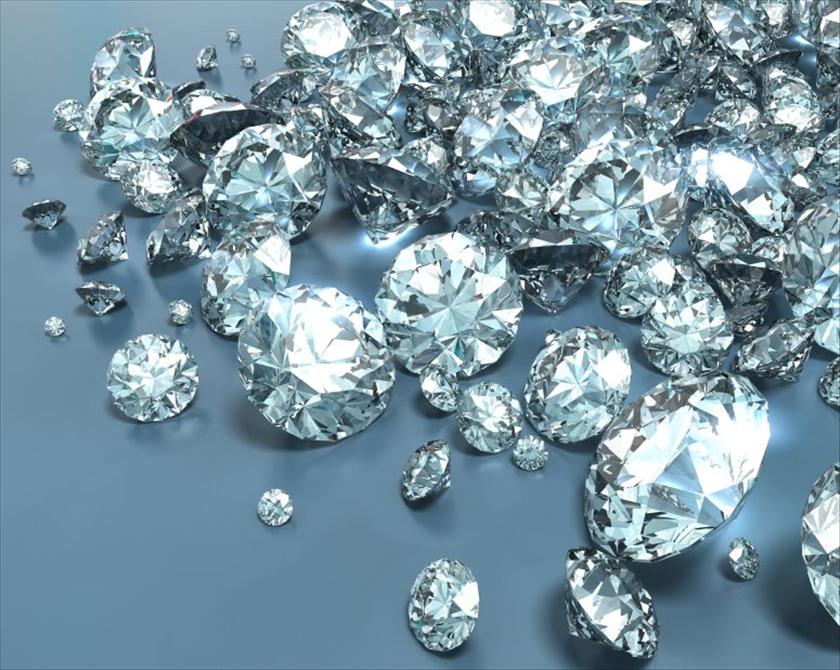Diamond Substitutes: The Beauty of Alternatives
Diamonds have long been cherished for their rarity, brilliance, and timeless elegance. However, in recent years, the jewelry industry has witnessed a growing trend towards diamond substitutes, particularly lab diamonds. In this article, we delve into the world of diamond substitutes, exploring the reasons behind their popularity and how they stack up against their natural counterparts.
The Allure of Diamond Substitutes
Diamond substitutes, as the name suggests, are alternative gemstones that mimic the visual and physical properties of natural diamonds. These substitutes have gained traction for several reasons, including affordability, ethical concerns, and technological advancements.
- Affordability: Natural diamonds are notoriously expensive due to their scarcity and the cost of mining. Diamond substitutes, on the other hand, offer a budget-friendly option, allowing more people to enjoy the beauty of sparkling gemstones without breaking the bank.
- Ethical Considerations: The diamond industry has faced scrutiny over ethical concerns related to labor practices and environmental impact. Many consumers are turning to diamond substitutes, such as lab diamonds, to avoid contributing to these issues.
- Technological Advancements: Lab-grown diamonds, often referred to as lab diamonds, have seen significant improvements in quality and production techniques. This has led to lab diamonds that are virtually indistinguishable from natural ones, making them an attractive choice for those seeking a sustainable alternative.
Lab Diamonds: A Closer Look
Lab diamonds are a specific category of diamond substitutes that have taken the jewelry market by storm. They are created through a process that replicates the conditions under which natural diamonds are formed deep within the Earth.
The Rise of Lab Diamonds
Lab diamonds have rapidly gained popularity for several compelling reasons:
- Quality Assurance: Lab diamonds are known for their consistent quality. They are graded and certified, ensuring that consumers know exactly what they are getting in terms of cut, clarity, carat, and color.
- Environmental Friendliness: The production of lab diamonds has a significantly lower environmental impact compared to diamond mining. It involves fewer greenhouse gas emissions and less disruption to natural ecosystems.
- Ethical Sourcing: Lab diamonds are inherently conflict-free, as they are not associated with regions where diamond mining has been linked to human rights abuses.
Diamond Substitutes in Various Forms
In addition to lab diamonds, there are other popular diamond substitutes, including cubic zirconia, moissanite, and white sapphires. Each of these alternatives has its unique characteristics and appeal:
- Cubic Zirconia: Known for its brilliance and affordability, cubic zirconia is a synthetic gemstone that closely resembles diamonds.
- Moissanite: This mineral has exceptional sparkle and fire, making it a favored choice for engagement rings and fine jewelry.
- White Sapphires: While not as brilliant as diamonds, white sapphires offer a unique and understated beauty, making them a suitable substitute for those seeking a more subtle gem.
Choosing the Right Diamond Substitute
Selecting the ideal diamond substitute depends on individual preferences and priorities. Some may prioritize affordability, while others focus on ethical and environmental considerations. Lab diamonds, cubic zirconia, moissanite, and white sapphires each offer distinct advantages, allowing consumers to make choices that align with their values and budget.
In Conclusion
Diamond substitutes, including the rising star of lab diamonds, are redefining the jewelry industry. Their affordability, ethical sourcing, and quality have made them a compelling choice for those seeking alternatives to natural diamonds. As technology continues to advance, the appeal of these substitutes is expected to grow, offering consumers a diverse range of options for creating their own dazzling jewelry collections. The world of diamonds is evolving, and these substitutes are shining bright in the spotlight.




